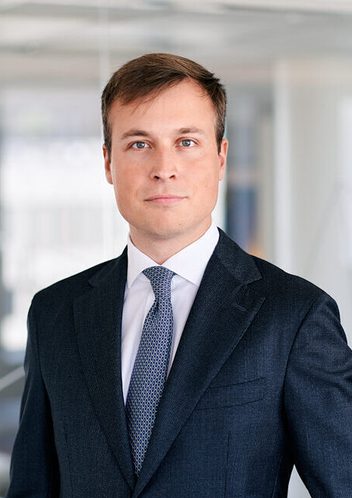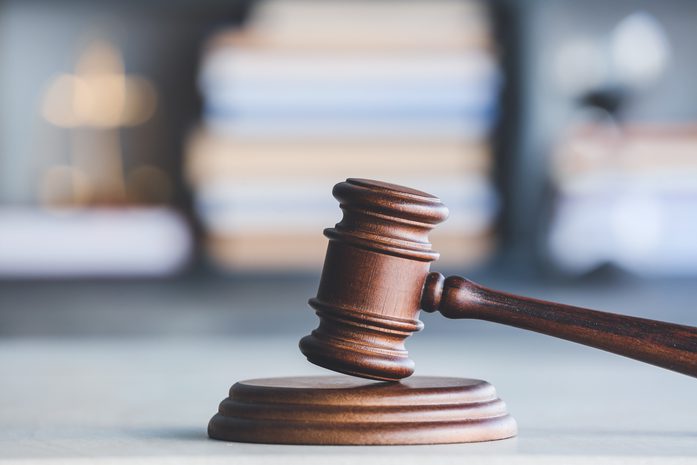
Martin Gukild
Senior Associate
Oslo
Newsletter
by Martin Gukild and Trine Skjelstad Jensen
Published:
In Norway the ordinary courts are considered a viable option to arbitration in commercial matters. It is also an outspoken ambition of the Supreme Court to handle a larger number of commercial disputes. As such, several commercial disputes end up before the Supreme Court every year, which gives important precedent for similar future disputes. In the following, we give a brief presentation of some of the most interesting cases decided in recent months.
In a recent decision, HR-2024-990-A, the Supreme Court ruled on a case of "CEO fraud", in which 130 000 000 NOK was lost.
The case concerned an international energy company group with offices in inter alia Norway and Hong Kong. The CEO in the Norwegian company was contacted by a third party, posing as the CEO of the parent company. Under the guise of a top-secret acquisition deal in China, the fake CEO instructed the Norwegian daughter company to make the necessary payments.
Over a period of two weeks, the Norwegian company made 13 payments through their bank, before the fraud was discovered a few days later.
The energy company claimed damages from their bank, of upward to 130 000 000 NOK. The primary ground for the claim was the Act on financial contracts and financial assignmentsarticle 35 which stipulates that the bank is responsible for any unauthorised payments. The energy company argued that their framework agreement with the bank solely gave three named persons the power to jointly authorise payments from the account.
This argument was rejected by the Supreme Court. They did not find that the framework agreement could be interpreted to limit other possible grounds for authorising payments. The general rule in Norwegian company law, is that the board represents the company in all matters, and that their powers can be delegated. In the energy company's statutes, it followed that the CEO could sign on behalf of the company. As such, the Supreme Court found that the payments were authorised by the energy company.
Secondly, the energy company claimed that the bank was liable for negligence. They claimed that the bank ought to have looked into the transactions, to rule out fraud. They further claimed that the bank had inadequate routines against fraud, that internal guidelines had not been followed and that the bank had failed to fulfil their AML obligations. On this question, the Supreme Court differed from the lower courts in their conclusion. The lower courts both found that the bank had acted negligently in the transactions. The Supreme Court found that not to be the case. The Court noted that it did not seem to exist any sort of industry standard with regards to anti-fraud and security work. And although the internal routines of the bank and been breached, this could not lead to liability, as these routines were not communicated to the costumers.
The bank was acquitted in full.
Just before the summer, in HR-2024-989-A, the Supreme Court ruled on an insurance case. They key question was whether the insurance payment could be withheld, as the insured had given false information.
The insured company had a property which housed a crab processing factory. In 2016, large parts of the factory were damaged in a fire. The chairman of the board and CEO of the company was asked to draft a list of machines and inventory and estimate age and value. In this list, he knowingly gave incorrect information regarding the age of several items.
The insurance company refused the claim, based on the false information, claiming it was a breach of the Norwegian law on Insurance Agreements article 8-1 fourth section. Here it is stated that if the insured knowingly gives incorrect or incomplete information, which he knows or must have understood may lead to a payment he is not entitled to, the insured loses any and all claims.
As the case stood before the Supreme Court, it was undisputed that the insured had given incorrect information. The question was whether he knew, or "must have understood", that this would lead to a payment he was not entitled to. It was the latter alternative that was of interest to the Supreme Court.
The Supreme Court states that the alternative of whether the insured "knew" he was giving false information which may lead to an undeserved payment, is merely an evidentiary question. However, whether he "must have understood" that the information which may lead to an undeserved payment, is a question of law and not evidentiary. As such, the Supreme Court found that the lower court had failed in their application of the law, when they had done a concrete assessment of whether it was sufficient evidence to support that the insured, in this very case, "must have understood" that the false information could result in an undeserved payment.
The Supreme Court quashed the lower courts ruling, stating that the insured "must have understood" if a possible ignorance is incomprehensible based on an objective assessment of the facts of the case. The Supreme Court noted that this would usually be the case when the insurance company asks for the relevant information in their damage or loss notification forms.
In a recent ruling, HR-2024-1117-A, the Supreme Court ruled on a case concerning the choice of law after a motor vehicle accident. The case concerned a Danish crane operator who was working on a project in Norway. The crane he operated was insured through a Danish insurance company, by his Danish employer. While at work building wind turbines in Hitra, the crane tipped, and the crane operator was injured.
After the accident the crane operator received a payment from the insurance company, in line with the Danish occupational injury rules. However, this payment was less than what he would have been entitled to under the Norwegian occupational injury rules, as it is mandatory under the Norwegian rules to cover damages to the operator of the motor vehicle. The crane operator then sued the insurance company, claiming that the Norwegian law had to apply, as the accident took place in Norway.
The Supreme Court had to decide whether the choice of law was Norwegian, as the place the accident took place, or whether it was Danish as both parties were Danish. Firstly, the Supreme Court considered and rejected the argument that the Norwegian law on vehicle liability requires foreign registered and insured vehicles to have coverage in accordance with Norwegian law.
Secondly the Supreme Court considered whether the case was regulated by the Act on choice of law in insurance., which reflects the Rome I regulation article 7. Both the lower courts had decided the choice of law was Norwegian based on this law. The Supreme Court however found that the law did not apply, as the law only applies to insurance agreements, and that it must be made a distinction between cases of tort law and liability on the one hand and insurance matters on the other. The fact that the injured party can direct their claim to the insurance company, instead of the insured, does not change the nature of the case. As such the choice of law had to be made in accordance with the general rule "Irma Mignon" which states that the choice of law is decided by which ever country the facts of the case after a total assessment has the strongest connection to.
The Supreme Court stated that usually the place of the accident is the natural choice of law. However, they drew inspiration from the Rome II regulation article 4 section 2, which gives an exception to this rule where both parties have the same country of origin at the time of the accident. The Supreme Court found that this exception would be in line with the general rule, as Denmark seemed to be the country that the case had the strongest connection to.
As such Danish law applied, and the insurance company was acquitted of the claims brought before the Norwegian courts.
